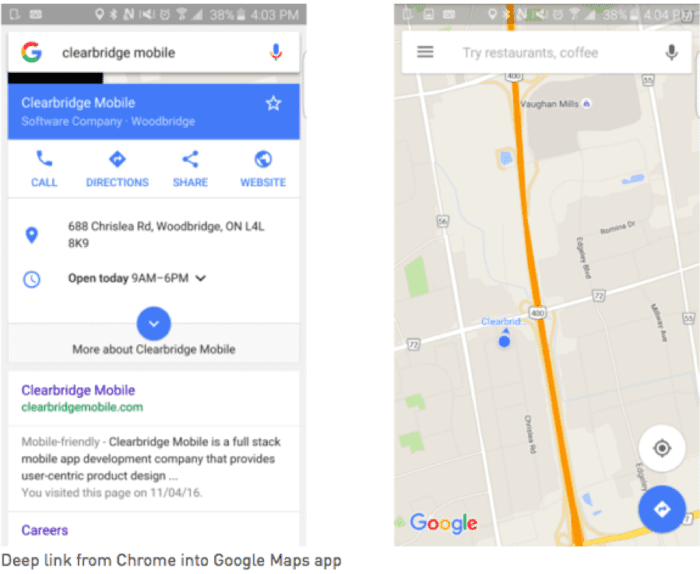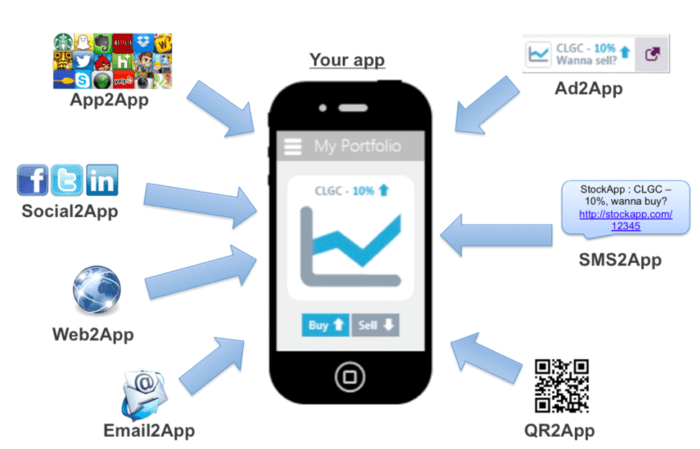Deep linking is an effective way to drive consumers to your app, improving user acquisition and user retention.
Consumers are using mobile phones for just about everything nowadays, which makes deep linking a beneficial strategy for you to use. Deep linking is a way to drive them back to your app. It provides a strong partnership between developers and mobile marketers in order to improve user acquisition and user retention.
When you think of deep-sea diving, what comes to mind? You are in an ocean of darkness, away from the surface, heading down towards the bottom - your actual destination. However, when you have no sense of direction, you can easily get lost or get distracted while taking in the beautiful marine life.
Download our Free Resource – 10 business-limiting SEO mistakes
To help you get to grips with SEO best practice, this guide takes a look at some of the common SEO mistakes.
Access the
The internet is a sea of information. With nearly 342 million registered domain names in the world and 55% of the population surfing the web, it’s easy for them to miss seeing your app entirely.
But more importantly, when a consumer is searching for a particular product or service, deep linking takes a user directly to the specific content or experience inside of it.
What are deep links?
Mobile apps and the web are, in fact, two separate worlds. Deep linking is the solution. It reunifies them and allows users to open apps to specific sections or content with standard (HTTP) weblinks. Most links on the web are deep web links, so we merely refer to them as links.
Mobile deep linking is a bit more complex. It operates much like a hyperlink, but instead of leading a person to a web page, deep links take them to a certain spot within a brand's mobile app. So when a user clicks on a link, they do not have to manually navigate through an app to locate the content that they are interested in.

Deep links serve as an essential component of the seamless customer journey. They act as intermediaries between a message and the user’s intended reaction to it, thereby smoothing out the app user’s experience.
Different types of deep links
To grasp the ideology behind it, you must first understand the different types of mobile deep linking. Each has a unique application and purpose.
Standard deep linking
Also known as basic links, they guide a user to a specific part of the installed app using its URI. They are often incorporated into several mobile channels such as web pages, emails, SMS messages, and social media sites. For instance, when a user taps on a push notification, they are led to the relevant section instead of the homepage.
The key concern is that they will only work if the app is installed on a user’s mobile phone. If the app is not available on the device, an error page will be displayed.
Deferred deep linking
Again these links will direct users to a particular product only if the app is downloaded. However, if the app is not available on the user’s device, they will be guided to an app store listing where they can install the app. Moreover, they take the user to the correct place after installation, disrupting the journey as little as possible.
Contextual deep linking
These function at a level above the other two types of deep linking. They are especially beneficial in providing a more personalized onboarding experience. This type of link records information about the user and connects it to the app, such as their names, who referred them, or which promotion code they want to apply.
Benefits of deep-linking
Why are developers focusing on this technology? Here are some advantages of implementing deep links that you need to take into consideration:
1. Quicker access to content
The obvious benefit is faster navigation to the desired page. They bring a user directly to the content inside an app. Plus, if a user wants to share the page with a friend, a deep link will direct them to the right place.
2. Enhances UX
The process of completing an intended action is simplified and swift, with virtually hassle-free navigation. Deep linking is more user-friendly, which results in a much better user experience.
3. Better user engagement and retention
A deep link helps users install an app if necessary, sends them directly to the selected content, drives engagement, keeps them on-course, and boosts retention. With around 97% of companies saying retention is a priority, this is only going to be a good thing.
Consider, for example, a user receives a notification from Netflix about a show they had stopped watching mid-way through. A link triggered the app to open the player and start the show precisely from where they had left off instead of the watchlist page. This keeps the user engaged with the content as well as the app.
4. Improves usage metrics
Consumers who were deep linked showed double the activation rate, double the retention rate, and visited the app twice as frequently. Sending one onboarding-related push notification to newly acquired users in the first week after install can increase retention by 71%.
5. Personalizes the onboarding experience
Deep linking adds a personal touch. A first name and behavior-based personalization can genuinely engage users. Some 29% that were contextually deep linked after installation signed up in the app immediately. App invites, incentives, or offers can also enhance the onboarding process.
6. Retargets inactive customers
Deep linking is an effective remarketing tool. It reconnects with users that have downloaded the app but have been dormant for some time. Re-engage with a user by sending them push notification with links to promotional offers or exclusive deals so that they have an incentive to interact with the app once again.
7. Boosts app visibility
According to Google’s indexing policies, deep links can help promote your app on search engine results pages. This increases your app's online visibility, along with your brand's visibility.
8. Increases revenue
Mobile app users convert three times more than mobile web users and spend 20 times more. With better engagement, more customers will return to your app and the higher the ROI, promoting your app is a good idea. Having said that, you’ll want to add cross-platform deep linking as a top priority.
9. Assesses marketing campaigns
Deep links help to evaluate the effectiveness of various marketing campaigns by gathering data about users. Apps learn and build user profiles, which is later iterated to create a valuable experience. Deep linking in apps means more advertising opportunities. Since digital marketing channels all rely on web standards, making them work with your apps will leverage it on all digital platforms.
Heading back to the surface
As with many digital technologies, there is no one-size-fits-all solution. As a business owner, you must carefully assess which type of deep linking is best for your brand. Moreover, you need to know how the deep link will be used and how it will present information to the user. Plus, no two users are the same. Their preferences and priorities are different.
You need to have a detailed vision as well as a clear perception of what strategy you are planning to use. Since trends indicate that users prefer to use mobile apps, 87% in apps versus 13% on the web, you need to understand the importance of reaching out to every individual with any device. With nearly 50% of internet traffic worldwide coming through mobile devices, you should implement the proper tactics across all platforms to increase conversions and ROI.
Deep linking conversions and analytics tools will help guide brand owners towards successful marketing campaigns. For both developers and users, deep linking was and still is a crucial component of a good mobile product.
Alma Causey is a Freelance writer by day and sports fan by night. She writes about Fashion and Tech. Live simply, give generously, watch football and a technology lover. She is currently associated with
Setalks Team.









